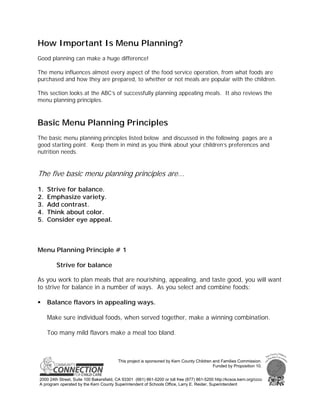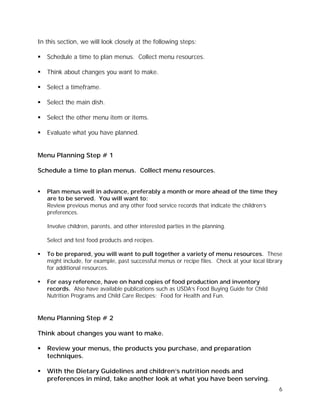The document discusses the importance of menu planning and provides principles and tips for creating well-balanced and appealing menus. It outlines 5 basic principles for menu planning: 1) strive for balance, 2) emphasize variety, 3) add contrast, 4) think about color, and 5) consider eye appeal. Additionally, it discusses factors to consider like regional preferences, holidays, seasons, and product availability. The document advocates planning menus in advance, selecting main dishes and side items, and evaluating menus for balance, variety, color, and presentation.








